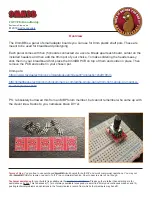
TopClean S CPC 30
8 Trouble-shooting
Hauser
97
8
Trouble-shooting
Trouble-shooting relates not only to measures which
•
can be carried out without opening the instrument but also to
•
instrument defects which require the replacement of components.
8.1
Trouble-shooting instructions
In this chapter, you will find diagnosis information and information on eliminating errors
which occur:
chap. 8.1.1, p. 98: Error number list
➞
List of all occurring error numbers.
chap. 8.1.2, p. 102: Process-specific errors
➞
e.g. temperature value is incorrect.
chap. 8.1.3, p. 104: Device-specific errors
➞
e.g. display is dark.
Before starting the repair work, please note the following safety instructions:
#
Warning!
Danger to life.
•
De-energise the instrument before you open it. Check that there is no voltage and
secure the switch(es) against switch-on.
•
If work is required under voltage, this may only be carried out by an electrician, but a
second person must be present for safety reasons.
•
Switching contacts may be powered by separate circuits. Also de-energise these
circuits before you work on the terminals.
"
Caution!
Danger to components through electrostatic discharge (ESD).
•
Electronic components are sensitive to electrostatic discharge. Take protective
measures, e.g. remove the charge from your person by touching the PE or wear a
permanent grounding in the form of a wrist strap.
Highly dangerous: Plastic floors at low air humidity and clothing made of synthetic
materials.
•
For your own safety, always use genuine spare parts. Only genuine spare parts
ensure correct functioning, accuracy and reliability after corrective maintenance.
















































